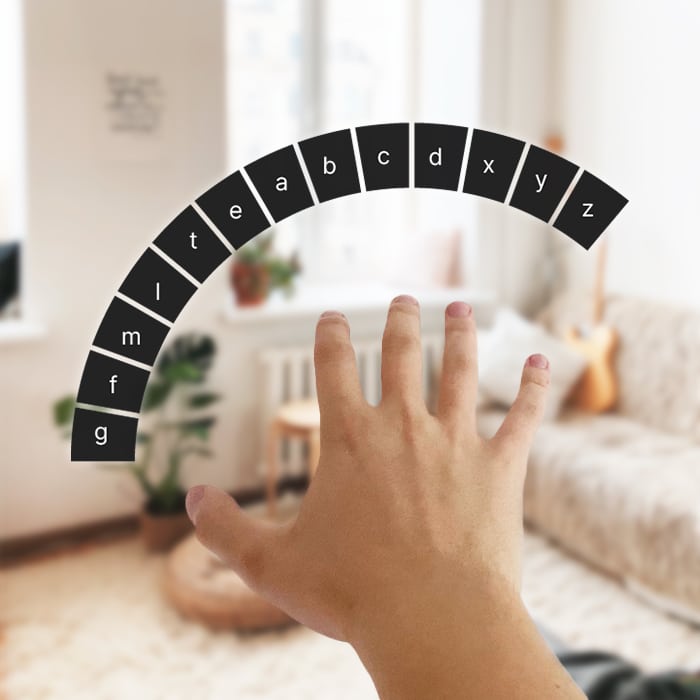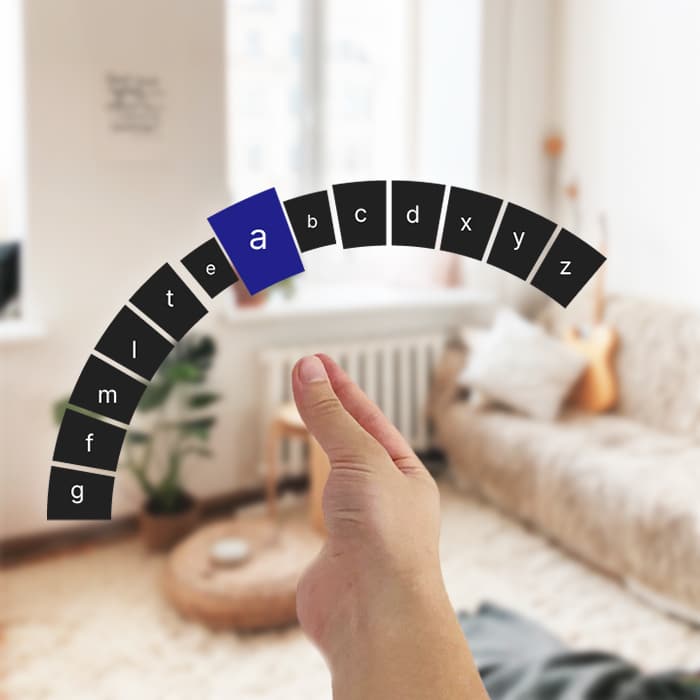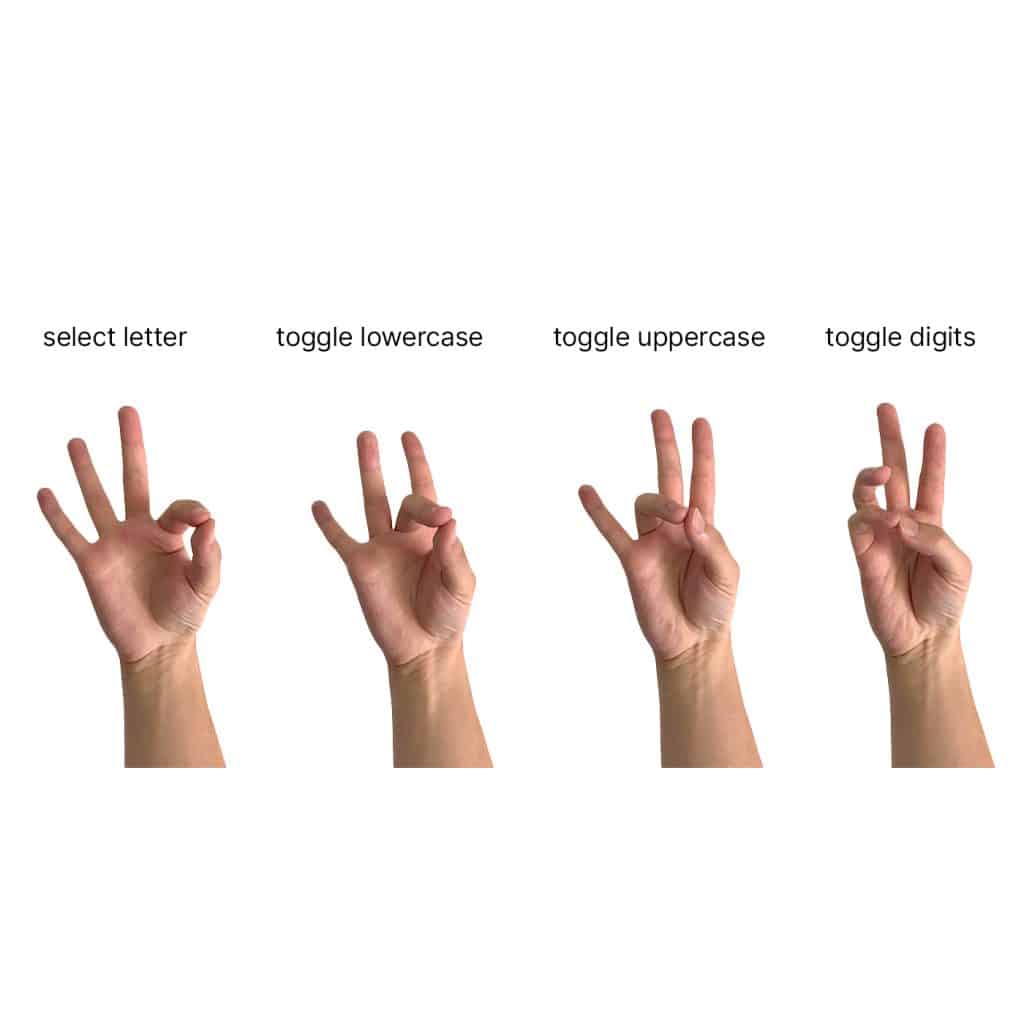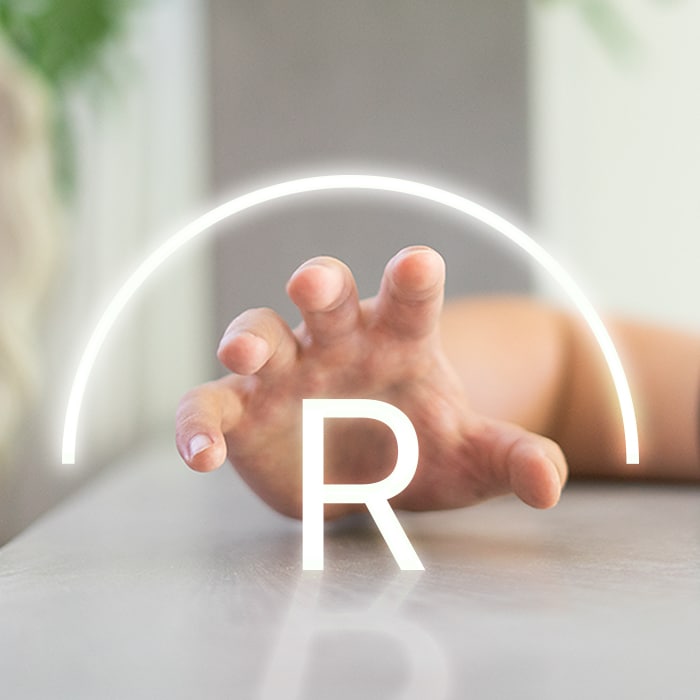

The selected letter changes with the rotation of the wrist. We can enter the selected letter by pinching our thumb and forefinger.

We use different hand gestures to toggle between different modes. Letters that are used more frequently are closer to comfortable hand positions.

Like us, the means of communication have evolved over the past 3,500 years. From hammer and chisel, to pen and paper, to computer and keyboard, writing tools improve as technology advances.
But better technology doesn’t necessarily mean better tools.
We type fast on the computer. Nevertheless, we often use a pen and paper when
learning. Because when we write, we can remember things more easily.
Consequently, the choice of tool depends on the situation.
Each tool has its pros and cons. Writing with a keyboard in a
virtual space requires precise aiming and a steady hand. In this case, the
radial interface offers a greater scope. An advantage for the physical keyboard
is the familiar key layout. With a radial letter layout, we first have to
reorient ourselves. In both cases we can rely on the motor memory of our hands.
This allows us to find positions of letters again after a short time.

The more familiar we are with a tool, the better we handle it. In everyday life, we got used to the physical keyboard and its layout. The radial interface offers an alternative to the usual writing for virtual reality.


